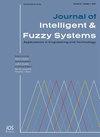一个用于实时数据库上的词、句子、方面和文档级情感分析的混合多源数据融合
IF 1
4区 计算机科学
Q3 COMPUTER SCIENCE, ARTIFICIAL INTELLIGENCE
引用次数: 0
摘要
句子、方面和文档级别的情感分析(SA)确定给定句子中特定方面短语的情感。由于神经网络在方面级情感分类中能够从文本中提取情感信息,神经网络已经取得了显著的成功。一般来说,足够大的训练语料库是神经网络有效的必要条件。基于神经网络的系统的性能由于目前可用的方面级语料库规模小而降低。在本研究中,我们提出了一个门控双边递归神经网络(G-Bi-RNN)作为多源数据融合的基础,他们的系统提供多个来源的情绪信息。我们开发了一个统一的架构,专门包括情感词汇的信息,包括方面和句子级语料库。为了进一步为情景识别提供特定于方面的短语表示,我们使用了G-Bi-RNN,这是一种基于深度双边transformer的预训练语言模型。我们使用笔记本电脑和餐馆的SemEval 2014数据集来评估我们的方法。根据实验结果,我们的方法在所有数据集上始终优于尖端技术。我们使用许多众所周知的方面级SA数据集来评估我们模型的有效性。实验表明,与基线模型相比,建议的模型可以产生最先进的结果。本文章由计算机程序翻译,如有差异,请以英文原文为准。
A hybrid multi-source data fusion for word, sentence, aspect, and document-level sentiment analysis on real-time databases
Sentiment analysis (SA)at the sentence, aspect, and document levels determines the sentiment of particular aspect phrases in a given sentence. Due to their capacity to extract sentiment information from text in aspect-level sentiment classification, neural networks (NNs) have achieved significant success. Generally speaking, sufficiently sizable training corpora are necessary for NNs to be effective. The performance of NN-based systems is reduced by the small size of the aspect-level corpora currently available. In this research, we suggest a gated bilateral recurrent neural network (G-Bi-RNN) as a foundation for multi-source data fusion, their system offers sentiment information that several sources. We develop a uniform architecture specifically to include information from sentimental lexicons, including aspect- and sentence-level corpora. To further provide aspect-specific phrase representations for SA, we use G-Bi-RNN, a deep bilateral Transformer-based pre-trained language model. We assess our methods using SemEval 2014 datasets for laptops and restaurants. According to experimental findings, our method consistently outperforms cutting-edge techniques on all datasets. We use a number of well-known aspect-level SA datasets to assess the efficacy of our model. Experiments show that when compared to baseline models, the suggested model can produce state-of-the-art results.
求助全文
通过发布文献求助,成功后即可免费获取论文全文。
去求助
来源期刊

Journal of Intelligent & Fuzzy Systems
工程技术-计算机:人工智能
CiteScore
3.40
自引率
10.00%
发文量
965
审稿时长
5.1 months
期刊介绍:
The purpose of the Journal of Intelligent & Fuzzy Systems: Applications in Engineering and Technology is to foster advancements of knowledge and help disseminate results concerning recent applications and case studies in the areas of fuzzy logic, intelligent systems, and web-based applications among working professionals and professionals in education and research, covering a broad cross-section of technical disciplines.
 求助内容:
求助内容: 应助结果提醒方式:
应助结果提醒方式:


